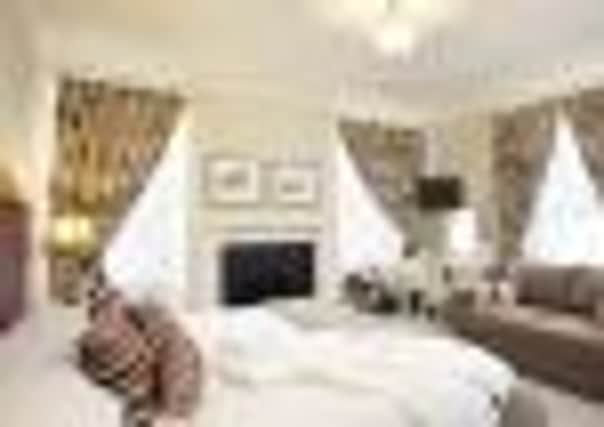Travel: Crieff, Perthshire


After making asses of ourselves pronouncing the “Mut” to rhyme with “hut” we soon found out that the correct pronunciation sounds more like “mooth-ill”. And it’s a lovely little village, with the ruins of a surprisingly large and important-looking cathedral at its heart. There are 100 listed buildings here, many rebuilt in the mid-1700s after having previously been destroyed in the Jacobite rising.
Our base for the weekend, the four-star Barley Bree, is rich with history too. A coaching inn dating to the 18th-century, one can only assume it’s a lot more comfortable for today’s weary travellers than it was for its patrons of old. For all that we love to wallow in the romance of history, my other half and I appreciated the creature comforts of an en suite bathroom, a flat-screen TV and a cloud-soft bed.
Advertisement
Hide AdTo say we ate well at the hotel would be an understatement. Chef and co-owner Fabrice brings his French flair to Scottish produce and creates the sort of dishes I find myself dreaming about long after the last petit four has disappeared. A starter of braised pig cheek with prune, orange and barley was rich and sticky – falling apart at the touch of a fork and practically melting in the mouth. Slow-cooked featherblade of beef followed, served with buttery mash, foresty-flavoured wild mushrooms and broad beans and crispy shallots. A slab of orange marmalade steamed pudding had me sneakily loosening my belt under the table before retiring, sated and contented, to bed.
The following morning we decided to explore nearby Crieff. A holiday hotspot for Victorians, the town still has a hospitable buzz about it and on the day of our visit a farmers’ market was in full swing. After hunting out a brace of scones and a pot of tea we paid a visit to Drummond Castle Gardens. The imposing 15th-century castle is to be found at the end of an enchanting and seemingly endless avenue of beech trees through landscape that appears pretty much as it must have done hundreds of years ago. Peacocks roam the estate, and although we didn’t see or hear them we picked up a couple of their discarded feathers, which only added to the magical feel of the place. The castle itself is not open to the public, but the spectacular gardens more than make up for it.
The formal box hedge designs fan out from the castle, encompassing ruthlessly clipped yew trees which draw the eye to the countryside beyond, in the manner of a little Scottish Versailles. Although Drummond has all the characteristics of a courtly 17th century Renaissance garden, it was heavily reworked in Victorian times. When Queen Victoria visited in 1842 she and Albert described the parterre as “really very fine”, as did Gavin and I in 2011.
The next day, after a fortifying breakfast (full Scottish for him, pastries and French toast for me) we decided to explore the evocatively named “Deil’s Cauldron” via a circular walk through Glen Lednock. An easy walk through the wooded glen takes you to a viewing platform from which to gaze into the “Cauldron”, a wide pool at the bottom of a rock-walled gorge, carved out in the last ice-age, and more Disney than satanic. The area is supposed to be a favoured haunt of the elusive Scottish wildcat, which sadly remained elusive on the day of our visit, as did the “brownie” or water elf said to inhabit the ravine and entice victims to their deaths. Oh well, you win some, you lose some. We walked as far as Glen Lednock Dam, admiring the beautiful Perthshire countryside before ominous clouds made us head back for home. Lovely food, great hospitality, long walks and a good soaking – our mini-break was complete!
The Facts Barley Bree, £70pp pn, 6 Willoughby Street, Muthill, Crieff, tel: 01764 681451, www.barleybree.com; admission to Drummond Castle Gardens (01764 681433, www.drummondcastlegardens.co.uk) is £5/£2.